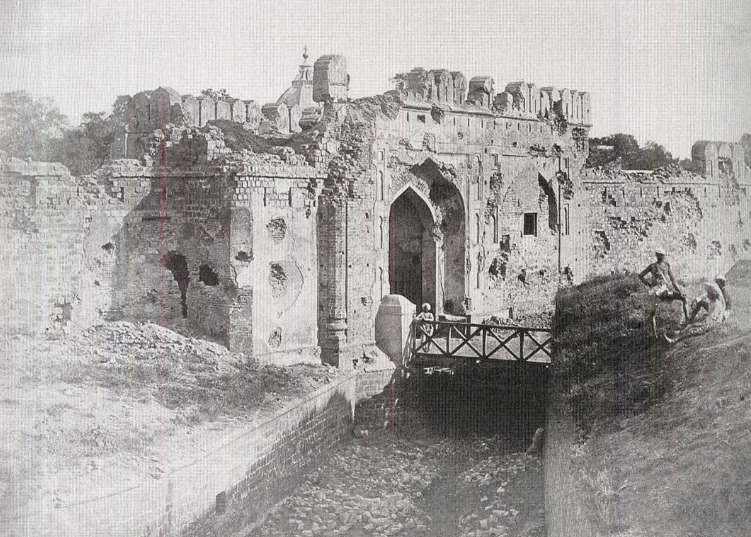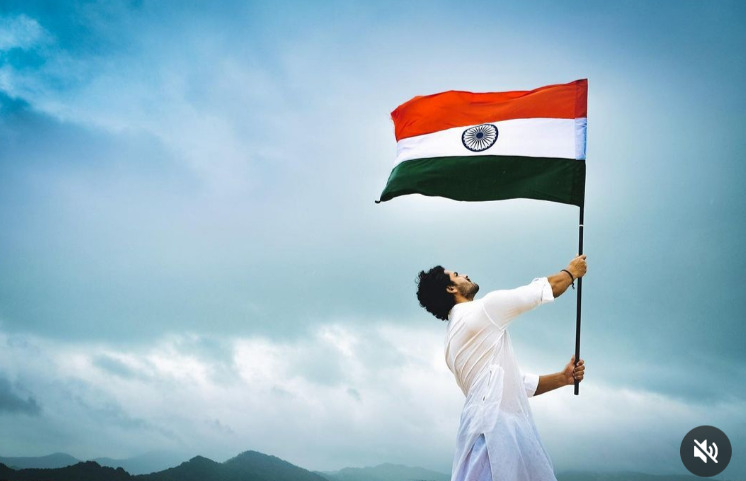Discover India’s Independence Trail
India has had a long and difficult path to freedom. Starting from the Revolt in 1857 by the Rani
of Jhansi, it took 90 years of struggle by stalwarts like Bal Gangadhar Tilak, Bhagat Singh,
Subhas Chandra Bose and several others till Mahatma Gandhi along with Jawaharlal Nehru,
Sardar Vallabhbhai Patel and many other brave men and women finally succeeded in making
India into an independent nation in 1947.
Our freedom struggle was fought in every corner of India, and while we have heard many of the
stories, there are still some events that are relatively unknown. To pay homage to our freedom
fighters, we have compiled a list of places that give us a panorama view of the events that
contributed to our freedom.
Kashmere Gate, Delhi – 1857

@delhiarchivesofficial
While we know about the 1857 revolt starting in Barrakpore in Calcutta, do you know that
a very fierce war was fought at the historic Kashmere Gate in Delhi? The British had
earlier been driven out of the Mughal capital and it was important for them to recapture
Delhi. After getting reinforcements they attacked Delhi again and it was here at Kashmere
Gate that on 14th September 1857 a fierce war took place between the Indian forces &
the British. This proved a turning point in the 1857 War.
Tilak Ghat, Marina Beach Chennai – 1908

@ The Hindu
Tilak Ghat at Marina Beach was once upon a time the public square of British India. It
was named by Subramania Siva in 1908 which was later renamed Seerani Arangam. It
was a major place from where Indians would gather to listen to speeches by the leading
lights of the freedom movement including Mahatma Gandhi.Tilak Ghat is now
commemorated as a row of four granite plaques with inscriptions in English and Tamil.
Champaran Satyagraha, Bihar – 1917

@history_of_modern_india
Mahatma Gandhi’s first satyagraha movement was started in Champaran The Britishers
imposed the ‘tinkathia’ system upon the farmers of Champaran wherein they were
imposed to grow indigo on a part of their land without any payment. This led to Gandhiji
organizing the farmers to protest against this measure.
Jalianwala Bagh, Amritsar – 1919

@momenta
The Jallianwala Bagh massacre marked a turning point in India’s struggle for
Independence. Over a thousand people who were peacefully protesting were killed by the
British Brigadier General R.E.H. Dyer A memorial was set up by the Government of India
in 1951 at Jallianwala Bagh to commemorate the spirit of Indian revolutionaries and the
people who lost their lives in the brutal massacre.
Dandi March, Gujarat – 1930

@history_of_modern_india
The Dandi March has been the most influential and inspirational movement in the Indian
freedom struggle. Mahatma Gandhi walked for 24 days and 387 km from Sabarmati
Ashram to Dandi as a satyagraha against the Salt Tax. The events after the Dandi Yatra
brought international attention to the freedom struggle and helped to create pressure
against the unjust British rule.
August Kranti Maidan, Mumbai – 1942

@ Mumbai Mirror
Gowalia Tank Maidan, officially renamed August Kranti Maidan, is a park in Mumbai, in
which Mahatma Gandhi issued the Quit India speech on 8 August 1942. It decreed that
unless the British left India immediately, mass agitations would take place. He raised the
slogan “Do or Die” and the then Viceroy called it “the most serious rebellion since 1857”.
Aga Khan Palace, Pune – 1942

@ Mkgandhi.org
The Aga Khan Palace was built by Sultan Muhammed Shah Aga Khan III in the city of
Pune, India. The palace is closely linked to the Indian freedom movement as it served as
a prison for Mahatma Gandhi, his wife Kasturba Gandhi and Sarojini Naidu. They were
imprisoned immediately after launching the Quit India Movement for a period of 21
months in this palace.

@andaman_nicobar
The Cellular Jail at the Andaman Islands was built in 1906 and had 696 cells in 7 wings
that radiated out of a watchtower. Each cell was for 1 person and built in such a way that
no prisoner could communicate to the others. Freedom fighters like Vinayak Damodar
Savarkar, Barindra Kumar Ghosh, Batukeshwar Dutt, Babarao Savarkar and Jatish
Chandra Pal underwent severe torture and punishment in the Cellular Jail.
All Indians should understand the sacrifices made by our freedom fighters. They were
well educated, with good jobs and families to take care of. Yet, they gave up all this to
fight the unjust rule of the British. They were jailed, tortured, beaten and many of them
were martyred for the cause. And through all of this they never wavered, driven by the
belief that one day they will succeed and we will be free. Let us show our gratitude to
them by making our country as great as the India of their dreams.








Can you be more specific about the content of your article? After reading it, I still have some doubts. Hope you can help me. https://www.binance.com/en-IN/register?ref=UM6SMJM3
Your point of view caught my eye and was very interesting. Thanks. I have a question for you.
Thank you for your sharing. I am worried that I lack creative ideas. It is your article that makes me full of hope. Thank you. But, I have a question, can you help me?